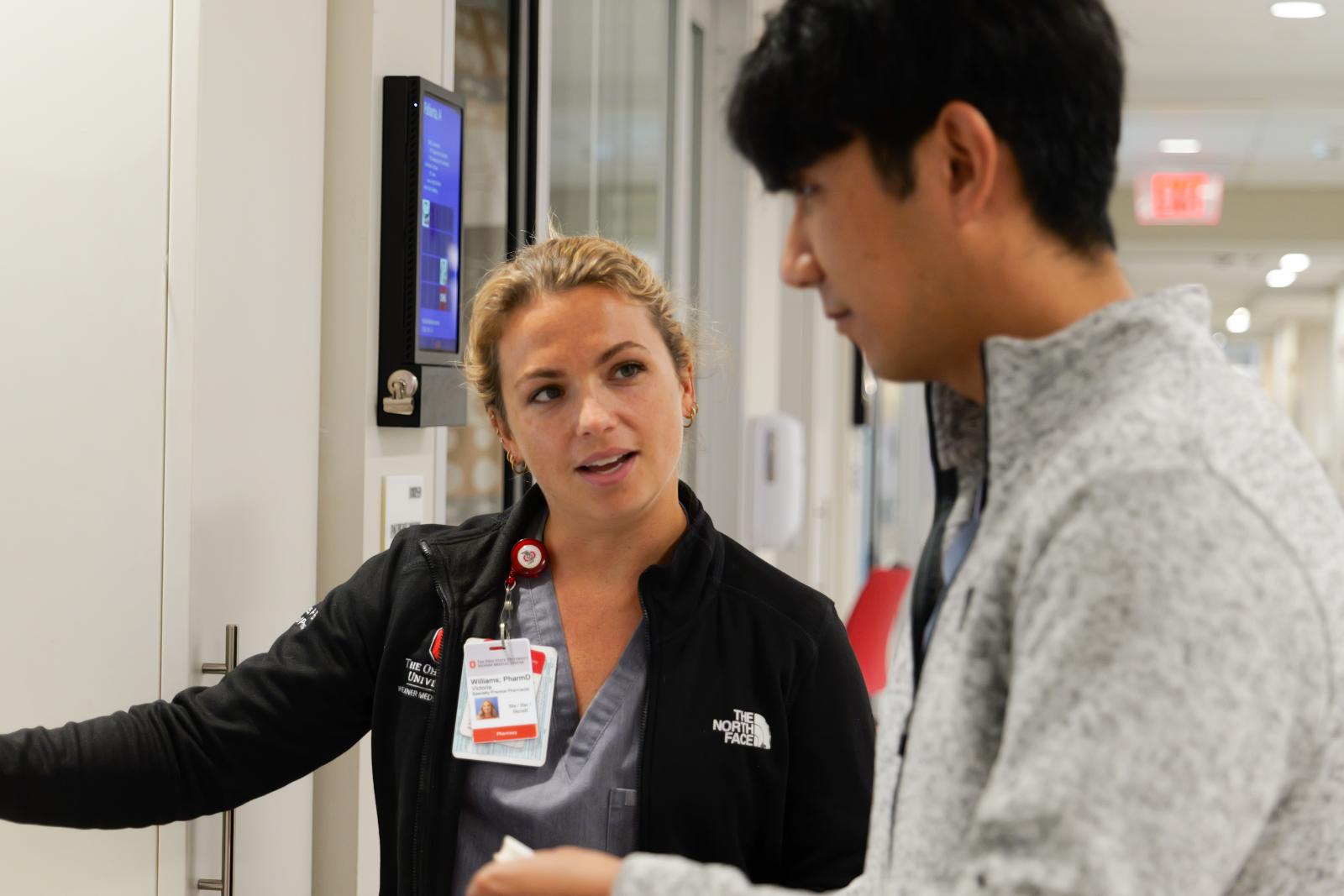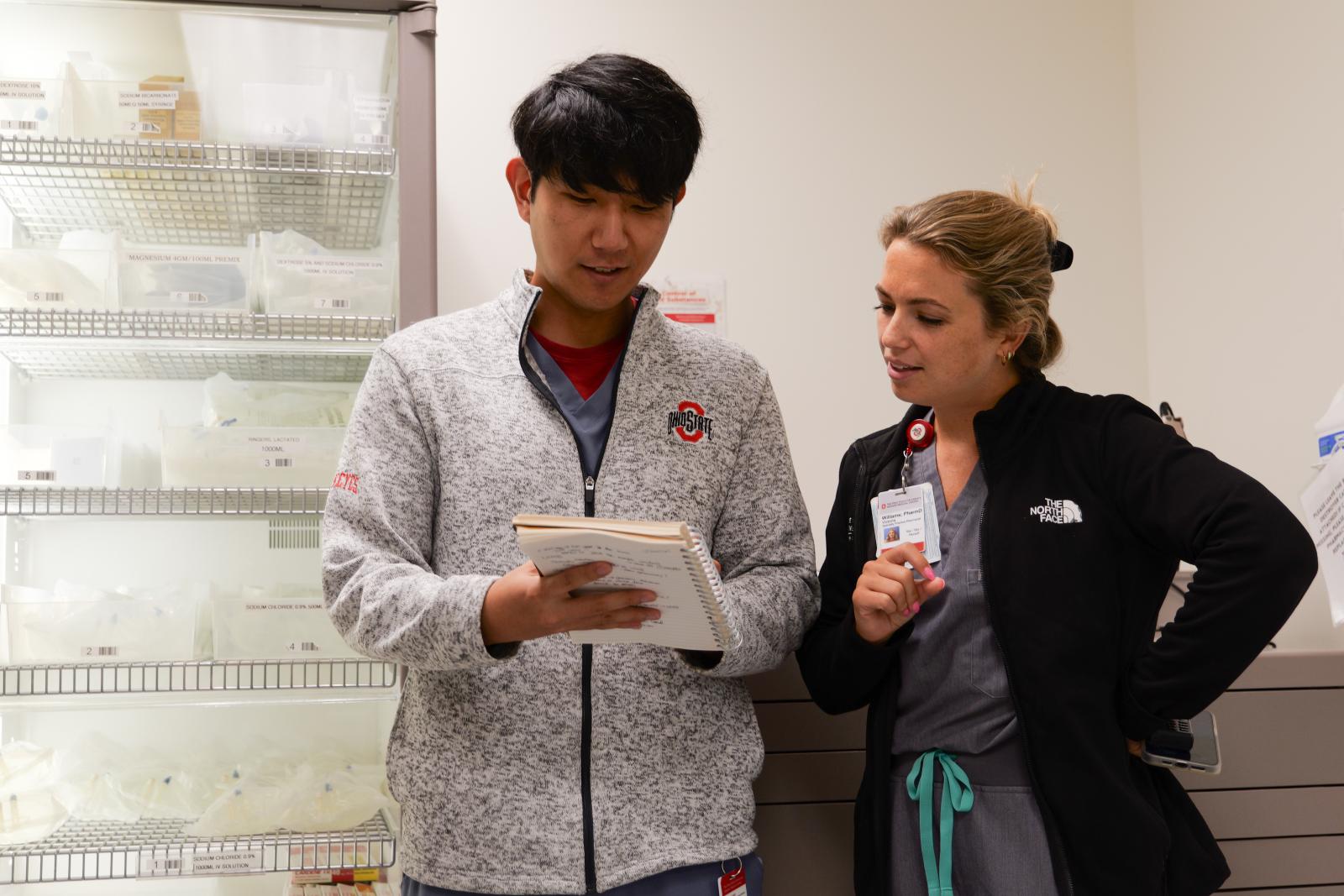Victoria Williams emphasizes role of clinicians in research through Dean’s Innovation Award

This article was published in The Script Magazine – Autumn 2025.
For clinical pharmacists, every patient interaction can present a new medical mystery. Those who also hold academic appointments are especially well-equipped to investigate these puzzles—turning real-world observations into research that advances patient care.
“Clinical faculty members with active practice sites are uniquely positioned to identify critical questions regarding optimal drug therapy and to collect data to address these gaps in clinical knowledge,” said Deanna Kroetz, PhD, BS ’85, dean and professor at The Ohio State University College of Pharmacy.
Assistant Professor Victoria Williams, PharmD '19, is a prime example. Dr. Williams’ joint appointment at the College of Pharmacy and Wexner Medical Center (OSUWMC) puts her in a favorable position to solve those mysteries from both academic and clinical angles.
Her most recent foray into pharmacology research took off in autumn 2024 at the college’s annual Research Day. Her project, “Maximizing Safety and Therapeutic Efficacy of Antibiotics in Critically Ill Adults with Renal Failure Receiving Renal Replacement Therapy,” received a boost in funding from a Dean’s Innovation Award (DIA).
The DIA supports early-career faculty and adolescent research projects by funding proof-of-concept and feasibility studies needed for competitive grant proposals. This research project is the first led by a Doctor of Pharmacy to receive DIA funding.
The study aims to determine optimal dosing for cefepime, a commonly used antibiotic in critically ill patients undergoing prolonged intermittent renal replacement therapy (PIRRT).
“This project and DIA funding are beautiful examples of how the college and OSUWMC are supporting research that might otherwise stall,” Dr. Williams said. “Professionals who are in practice full-time face greater constraints of time or resources necessary to tackle research relevant to their patients. I’m lucky to have access to both.”
Supported by the work of PhD-PharmD student Jin Gyu Kim, the team of researchers has designed an observational clinical trial to assess cefepime behavior in patients at particularly high risk of treatment failure or toxicity.
“Our hope is to use this initial data to determine optimal dosing and expand the study’s scope to analyze other renal replacement therapy modalities and antibiotics,” said Mitch Phelps, PhD, Kimberly Professor of Pharmacy and co-PI. “DIA funds will support the collection of this pilot data and the submission of grant proposals to achieve those long-term objectives.”

Patient enrollment for this clinical trial is underway, with data collection expected to begin by the end of the year.
Since 2022, Dr. Williams has held a joint appointment between the College of Pharmacy and OSUWMC – a role designed to foster collaboration between the two institutions. She divides her time between treating ICU patients at OSUWMC and teaching, mentoring and conducting research at the college.
“Caring for patients as a part of my clinical practice responsibilities keeps them at the center of everything I do,” Dr. Williams said. “Excitingly, I can leverage my position to address the problems that I’m seeing within our contemporary pharmacy practice. With my ability to initiate research at the college, I can begin to address patient problems on a larger scale.”
As the interdisciplinary team pushes forward, their work illustrates how clinical insight drives meaningful research. By empowering practitioners like Dr. Williams to seek deeper answers to their patients’ disease states, treatment becomes more evidence-based and patient-centered than ever before.
“Funding early-career clinician scientists ensures that these faculty don’t get too busy and move away from their initial excitement about research,” Dean Kroetz said. “The college is committed to building our footprint of clinical and translational science, and I am excited to be able to provide opportunities for our newest faculty members to start what I hope are sustainable research programs that address clinically relevant questions and capitalize on the patient populations served by Ohio State.”